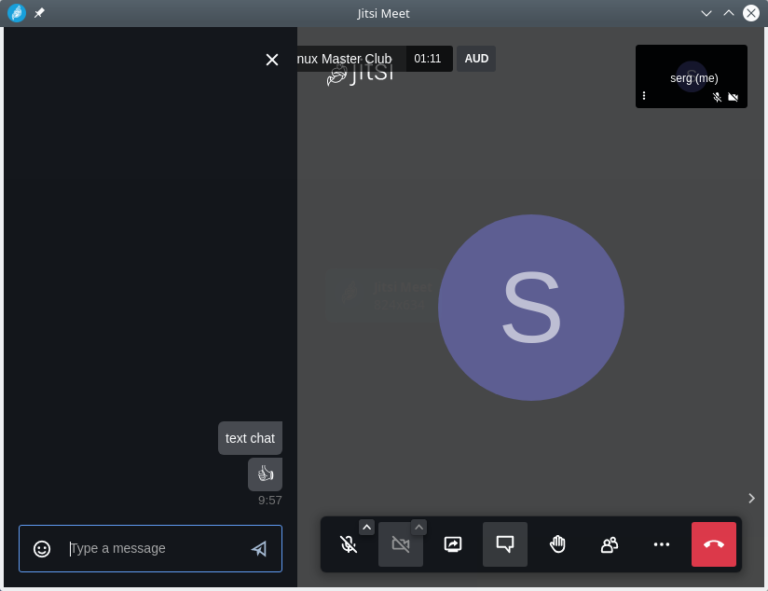

If participants cannot see or hear each other, double check your firewall / NAT rules.Īs we prefer the usage of Nginx as webserver, the installer checks first for the presence of Nginx and then for Apache. You can also visit to test your browser's WebRTC support. Some versions of some browsers are known to have issues with Jitsi Meet. You can try to use a different web browser. The second run of the uninstall command fixes this, as by then the jigasi or jitsi-videobridge daemons are already stopped. The reason for the failure is that sometimes the uninstall script is faster than the process that stops the daemons.

When this happens, just run the uninstall command a second time and it should be ok. Sometimes the following packages will fail to uninstall properly: This way you can avoid problems with a self-signed certificate (see above for details). The best method is to create a certificate that is signed by a Certificate Authority. See the User Guide for details: Generate a Let's Encrypt certificate (optional, recommended)
#Jitsi log in password#
The access control for conferences/rooms is managed in the rooms, you can set a password on the webpage of the specific room after creation. If you want to limit the ability to start a conference to registered users, follow the instructions to set up a secure domain. Jitsi Meet server: Note: By default, anyone who has access to your Jitsi Meet server will be able to start a conference: if your server is open to the world, anyone can have a chat with anyone else. This hostname will be used for virtualhost configuration inside Jitsi Meet and also, you and your correspondents will be using it to access the web conferences.

If you have a domain, use the specific domain name, for example:Īlternatively you can enter the IP address of the machine (if it is static or doesn't change). You will also be asked to enter the hostname of the Jitsi Meet instance. You will be asked about SSL/TLS certificate generation. If you are already running Nginx on port 443 on the same machine, turnserver configuration will be skipped as it will conflict with your current port 443. Note: The installer will check if Nginx or Apache are present (in that order) and configure a virtual host within the web server it finds to serve Jitsi Meet. Jitsi Meet mobile apps require a valid certificate signed by a trusted Certificate Authority and will not be able to connect to your server if you choose a self-signed certificate. Using a self-signed certificate will result in warnings being shown in your users browsers, because they cannot verify your server's identity. You could also use the self-signed certificate but this is not recommended for the following reasons:
#Jitsi log in install#
The recommended option is to choose Generate a new self-signed certificate and create a Lets-Encrypt Certificate later (see below) (this will replace the self-signed certificate).īut if you want to use a different certificate or you want to choose a different challenge type of Let's Encrypt (see below for details), you should create that certificate first and then install jitsi-meet and choose I want to use my own certificate. In order to have encrypted communications, you need a TLS certificate.ĭuring installation of Jitsi Meet you can choose between different options: Note: if participants cannot see or hear each other, double check your firewall / NAT rules. If you are running Jitsi Meet on a server behind NAT, forward the ports on your router to your server's IP address. For more details on using and hardening SSH access, see the corresponding Debian or Ubuntu documentation.


 0 kommentar(er)
0 kommentar(er)
